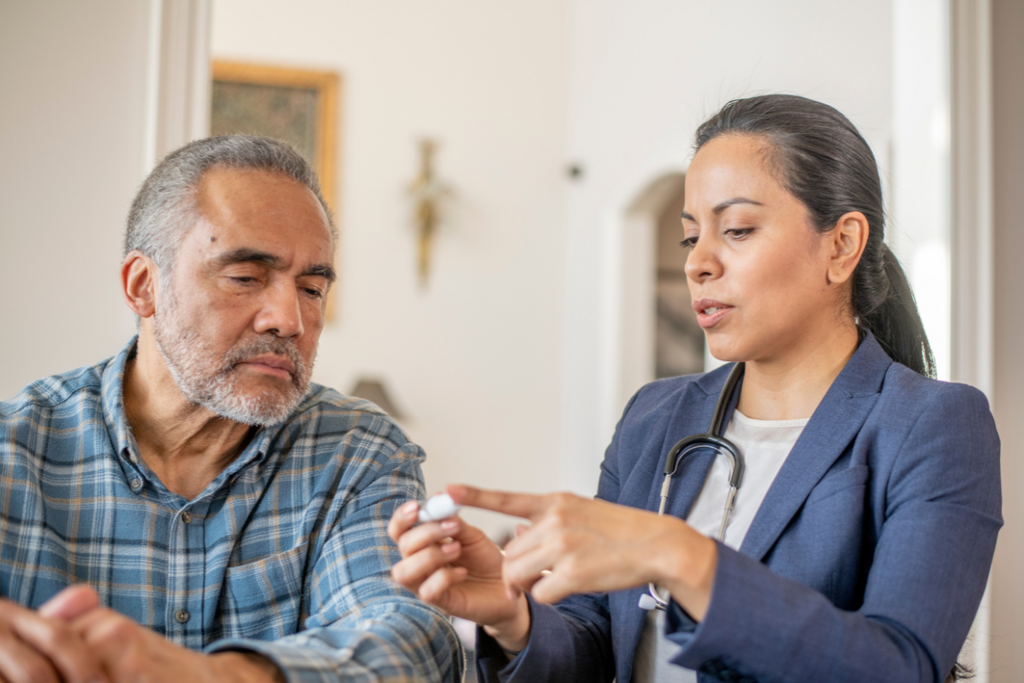1 in 10 people are currently living with diabetes, with that number expected to rise sharply over the coming years. Get behind World Diabetes Day on November 14 by protecting you and your family through diabetes education!
Since 1991 World Diabetes Day (WDD) has been advocating diabetes awareness and the issues surrounding the disease. Each year, more and more adults and children are affected by either type 1 or type 2 diabetes. The WDD foundation and the IDF Diabetes Atlas provide these current diabetes statistics:
- 537 million adults (1 in 10) were living with diabetes in 2021
- Almost 1 in 2 adults (44%) with diabetes remain undiagnosed (240 million)
- The majority of adults have type 2 diabetes
- More than 3 in 4 people with diabetes live in low and middle-income countries
- 541 million adults are at increased risk of developing type 2 diabetes
- More than 1.2 million children and adolescents (0-19 years) live with type 1 diabetes
- Diabetes caused 6.7 million deaths in 2021
- Diabetes was responsible for 9% of the global total spent on healthcare
- 1 in 6 live births (21 million) are affected by high blood glucose (hyperglycaemia) in pregnancy
Unfortunately, millions of sufferers around the world do not have access to diabetes care. The theme of this year’s WDD is “Access To Diabetes Care.” FitTrack Australia proudly stock a range of high quality diabetes management products to help people with the disease to monitor their blood glucose levels.
So, what really is diabetes? Are you at risk of the disorder? Keep reading to find out!

What is Diabetes?
Diabetes is a serious condition that prevents the body from maintaining healthy levels of glucose in the blood. It halts the effective production of insulin (an essential hormone for glucose-energy conversion), causing sufferers to have harmful levels of blood glucose after eating any foods with sugar or starch. According to Diabetes Australia, the condition affects the whole body - being a leading cause of blindness, kidney failure, dialysis and limb amputations. It also increases the risk of heart attack and stroke up to four times and impacts mental health. Currently, there is no cure for diabetes.
Diabetes can be broken into three types: type 1, type 2 and gestational diabetes. Each type is complex and requires daily management.
What is Type 1 Diabetes?
Type 1 diabetes occurs when the pancreas fails to produce insulin. It is an autoimmune disease, causing the insulin-producing cells in the pancreas to be destroyed by one’s immune system.This type accounts for about 10-15% of all diabetes cases. It was previously thought that type 1 diabetes affected mainly children, teens and young adults, however new research is showing that nearly half of all type 1 cases are in people over the age of 30. Those with the condition depend on close blood glucose monitoring and the daily administration of insulin.
Symptoms of Type 1 Diabetes Can Include:
- Excessive thirst
- Excessive urination
- Unexplained weight loss
- Weakness
- Fatigue
- Blurred vision
- Irritability
What is Type 2 Diabetes?
Type 2 diabetes occurs when either; the pancreas fails to produce enough insulin, the insulin does not function effectively, the body’s cells have an ineffective response to insulin, or a combination of these factors. This type accounts for about 85-90% of all diabetes cases. While type 2 diabetes has historically been common in adults over the age of 45, it is now also occurring in younger people and children. Type 2 diabetes can be managed through lifestyle changes and medication.
Symptoms of Type 2 Diabetes Can Include:
- Excessive thirst
- Excessive urination
- Weakness
- Fatigue
- Always feeling hungry
- Slow healing cuts and grazes
- Itching
- Skin infections
- Blurred vision
- Gradual weight gain
- Irritability
- Headaches
- Lightheadedness
- Leg Cramps

What is Gestational Diabetes?
Known as GDM, Gestational diabetes mellitus is the fastest growing type of diabetes in Australia. It is a form of the disease that appears during pregnancy - usually within the 24th to 28th week. Diagnosis occurs when high glucose levels appear in the blood during this time. GDM usually goes away after delivery. Some women, however, still experience symptoms of gestational diabetes after the baby is born. This type increases the chance of both mother and child developing type 2 diabetes in the future.
Who Is At Risk Of Diabetes Type 2?
Diabetes is a genetic disease. Modifiable lifestyle risk factors can contribute to it - including high blood pressure, obesity, inactivity and poor diet. The risk of getting type 2 diabetes also increases with age and if a woman has previously had gestational diabetes.
On their website, the International Diabetes Federation (IDF) has created an online diabetes risk assessment which aims to predict an individual’s risk of developing type 2 diabetes within the next ten years. Click here to take the IDF’s type 2 diabetes risk test!

What Diabetes Management Tools Are Available?
Diabetes treatment heavily revolves around keeping the body’s blood glucose levels within a certain range. This involves balancing your diet with activity and diabetes medications. The use of diabetes management tools such as blood glucose monitors can help you determine the link between blood glucose levels, food, exercise and insulin. Keeping track of blood glucose over time can help you and your doctor develop an effective management strategy for you individually.
Different factors for each person will determine how often they need to check their blood glucose levels. Some people with type 2 diabetes may not need to check their levels as regularly as some others with diabetes. Most, however, find a structured self monitoring program to be helpful.
Tools required to check blood glucose levels include:
Fittrack Australia are suppliers of a range of iHealth Glucometers and diabetes management equipment as listed above. We provide fast shipping of blood glucose monitoring systems to all parts of Australia. FitTrack Australia also stock smart diabetes monitoring bundles with all the equipment you need to start testing.
Learning how to check your blood glucose levels can help you to have confidence in monitoring your diabetes, better understand how your body works and know how your lifestyle changes are making a difference.
Get behind this year’s World Diabetes Day by learning more about the condition and what you can do to support those you love with diabetes!
References:
